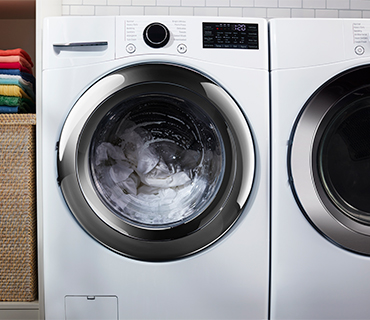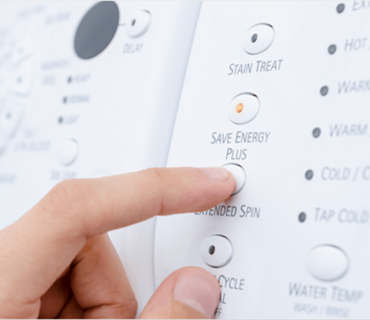What is a High Efficiency Washer?
High-efficiency washers (HE) feature technology that helps to reduce the amount of water and energy needed to do a load of laundry. They use up to 80% less water than traditional, top-loading washers, deliver 65% energy savings, and also can wash more laundry in one go than traditional machines. Not only that, but they are also up to 40% larger than traditional, top-loading washing machines and can accommodate much larger loads.
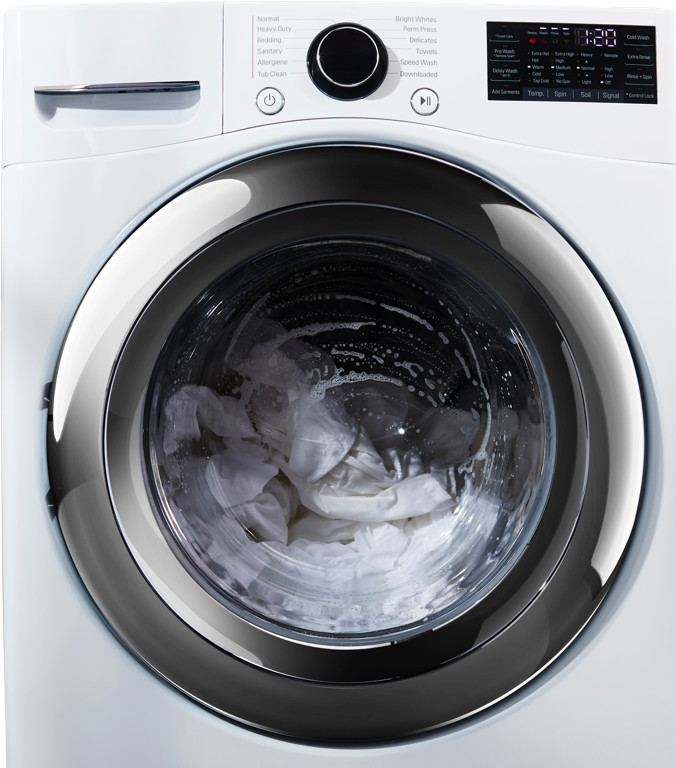
How do high efficiency (HE) washers differ from traditional washers?
100 decisions

The average High Efficiency Washers makes over 100 decisions per cycle..
40% bigger
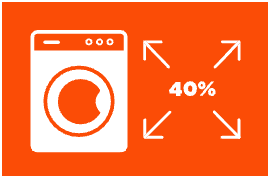
High Efficiency Washers are up to 40% bigger than traditional top-loader washer.
3x less water
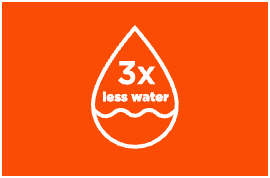
When used correctly, HE Washers use 3x less water than traditional washers.
65% less energy
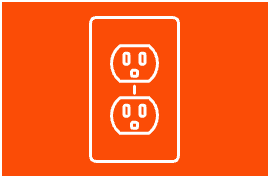
They deliver 65% energy savings.
High-efficiency washers are much larger than regular washers, holding up to 40% more clothes
One reason they can hold more clothes is the absence of an agitator in the drum, which also means the wash process is gentler on your clothes. However, being able to hold up to 40% more clothes also means that there is 45% more soil to remove. For this reason, HE washers require more detergent to achieve a thorough clean, especially when it comes to large and extra-large HE loads. However, it’s not only the amount of detergent that’s important for getting great results, but also the quality of the detergent. HE washers can deliver the fast results they promise when used correctly. It is critical to use a specially-formulated, low-sudsing HE detergent like Tide HE Turbo Clean to achieve time and water savings.
For more detailed information about high-efficiency washers and how they work, take a look at our HE FAQ.
Why does high-efficiency detergent matter?
Because high-efficiency washers are smarter, larger and more efficient, the role of the detergent has significantly increased. Now, using any old detergent is no longer enough. To get the most out of your HE washer, you need a HE detergent like Tide HE Turbo Clean Laundry Detergent. Tide’s quick-dissolving Smart Suds™ technology helps to save time, water and energy by preventing HE machines from running additional rinse cycles.
What happens when you use high-sudsing detergents
Because high-efficiency washers use less water, it’s important you use a high-efficiency detergent that is designed to operate in such low-water conditions. When an HE machine detects excess suds after completing the first rinse cycle, it will add more rinse cycles. Some detergents produce too many suds, and e if you don’t use a low-sudsing detergent designed specifically for high-efficiency washers, your washer can take up to 25 minutes longer to get your laundry done.

If you use high sudsing detergent, your High Efficiency washer senses too many suds and may add an extra rinse cycle time.

Extra rinses add up to 10 gallons more water & more energy.

If you don't use enough detergent for these large loads, it can lead to worse cleaning and freshness.
The Smart Suds™ technology
Your washer will then use more energy and water, costing you both time and money. The Smart Suds™ technology in HE Turbo Clean detergents reduces suds, meaning an HE washer won’t need to go into additional rinse cycles, making your wash more efficient.
Related products
Tide Original Scent Liquid Laundry Detergent
Tide PODS® Laundry Detergent Original Scent







